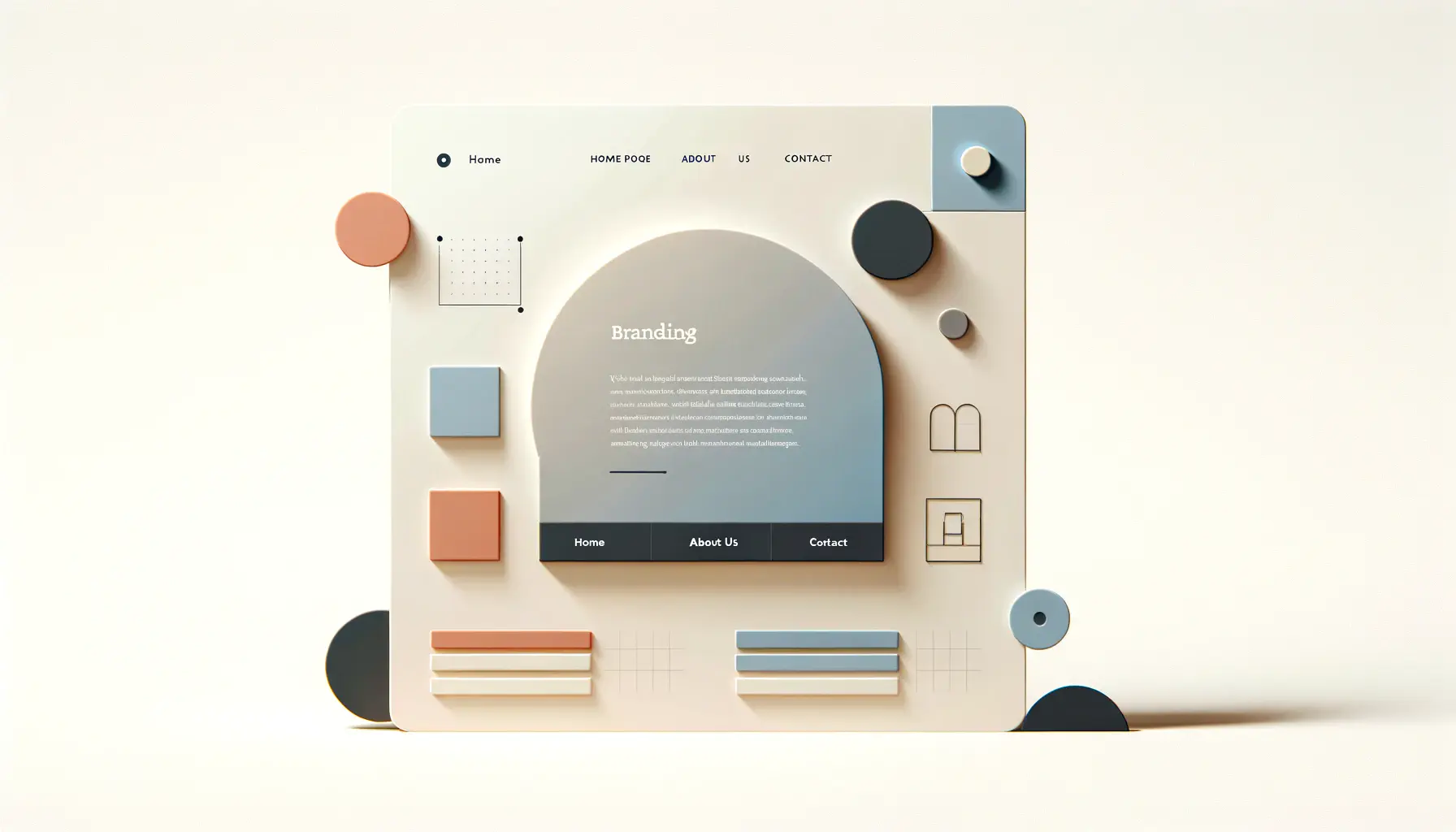The digital landscape is continuously evolving, with web design at its core.
Among the myriad of technologies and techniques that shape the way we experience the web, scalable vector fonts stand out for their versatility and efficiency.
Scalable vector fonts, leveraging the principles of vector graphics, offer a seamless way to ensure text looks crisp and clear on any display, regardless of resolution or size.
This adaptability is crucial in today’s multi-device world, where content must be accessible and legible across a wide range of platforms.
At the heart of scalable vector fonts is the concept of scalability without loss of quality.
Unlike raster-based fonts, which can become pixelated or blurry when scaled up or down, vector fonts maintain their clarity and sharpness.
This is because they are based on mathematical equations rather than fixed pixels, allowing them to be resized dynamically to fit any screen.
This feature not only enhances the user experience but also simplifies the design process, making scalable vector fonts a valuable asset for web designers.
- Understanding Scalable Vector Fonts
- The Advantages of Scalable Vector Fonts in Responsive Design
- Optimizing Scalable Vector Fonts for Web Performance
- Accessibility and Scalable Vector Fonts
- Integrating Scalable Vector Fonts with CSS and JavaScript
- Future Trends in Scalable Vector Fonts
- Best Practices for Using Scalable Vector Fonts in Web Design
- Embracing the Future with Scalable Vector Fonts
- Scalable Vector Fonts FAQs
Understanding Scalable Vector Fonts
What Makes Vector Fonts Unique
Vector fonts are distinguished by their use of geometric shapes, such as points, lines, and curves, to define characters.
This method contrasts with traditional bitmap fonts, which represent text using a grid of pixels.
The vector approach allows fonts to be scaled to any size without losing quality, making them ideal for responsive web design.
As screens vary from smartphones to large desktop monitors, scalable vector fonts ensure that text remains sharp and readable, providing a consistent experience across devices.
Another advantage of vector fonts is their efficiency in terms of file size.
Because they describe text using mathematical formulas rather than storing individual pixels, vector fonts typically have smaller file sizes.
This can significantly reduce web page load times, improving overall site performance and user satisfaction.
Faster load times are not only beneficial for the user experience but also contribute positively to search engine rankings, making scalable vector fonts an effective tool for SEO optimization.
Application in Web Design
Scalable vector fonts find their application in various aspects of web design, from branding elements like logos to body text that adapts to user’s screen sizes.
Their scalability ensures that branding elements are displayed with high fidelity across all platforms, reinforcing brand identity.
For body text, scalable vector fonts offer an unparalleled level of readability and accessibility, making web content more engaging and easier to consume.
Moreover, the use of scalable vector fonts in web design is not limited to text alone.
Icons and other decorative elements can also be created using vector techniques, allowing for a fully scalable and responsive design ecosystem.
This unified approach to using vector graphics for both text and elements ensures a cohesive and optimized web experience, highlighting the versatility and importance of scalable vector fonts in modern web design.
Scalable vector fonts revolutionize web design by offering unmatched clarity, efficiency, and flexibility across all devices, making them a cornerstone of responsive design strategies.
The Advantages of Scalable Vector Fonts in Responsive Design
Responsive design is a critical component of modern web development, ensuring that websites are accessible and functional across a variety of devices and screen sizes.
Scalable vector fonts play a pivotal role in this framework, offering several advantages that enhance the adaptability and user experience of web projects.
Their integration into responsive design not only improves visual communication but also streamlines the development process.
Key benefits of scalable vector fonts in responsive design include:
- Seamless Scaling: Vector fonts can be resized without any loss of quality, ensuring that text remains sharp and legible on any screen size. This is particularly important for mobile devices, where screen real estate is limited, and readability can significantly impact user engagement.
- Improved Performance: Due to their mathematical nature, vector fonts often have smaller file sizes compared to their raster counterparts. This leads to faster page load times, a crucial factor in user experience and SEO rankings.
- Consistency Across Devices: With scalable vector fonts, designers can maintain visual consistency across different platforms. This uniformity strengthens brand identity and ensures a cohesive user experience, regardless of how or where the content is accessed.
Enhancing User Experience with Vector Fonts
The use of scalable vector fonts goes beyond just technical benefits, significantly enhancing the overall user experience.
By ensuring clarity and readability across all devices, vector fonts make web content more accessible and easier to understand.
This accessibility is vital for reaching a wider audience, including those with visual impairments who rely on screen readers and other assistive technologies.
Furthermore, scalable vector fonts allow for greater creative flexibility in design.
Designers can experiment with a wide range of typography styles without worrying about the technical limitations of traditional bitmap fonts.
This creative freedom enables the creation of unique and engaging designs that stand out in the crowded digital landscape.
Incorporating scalable vector fonts into responsive design not only improves technical performance and consistency but also significantly enhances the user experience by making web content more accessible and visually appealing.
Optimizing Scalable Vector Fonts for Web Performance
While scalable vector fonts offer numerous advantages in terms of scalability and quality, optimizing these fonts for web performance is crucial to leveraging their full potential.
Proper optimization ensures that web pages load quickly and efficiently, enhancing the user experience and boosting SEO rankings.
Here, we delve into strategies for optimizing scalable vector fonts to ensure they contribute positively to web performance.
Effective optimization techniques include:
- Font Minification: Similar to other web assets, vector fonts can be minified to reduce file size without affecting their quality. Minification removes unnecessary metadata, comments, and whitespace from the font files, streamlining them for faster loading times.
- Font Subsetting: Subsetting involves including only the specific characters or glyphs that a web page needs, rather than the entire font set. This can significantly reduce the size of font files, especially for fonts that support multiple languages and character sets.
- Efficient Font Loading: Implementing efficient font loading strategies, such as loading fonts asynchronously or using modern CSS features like
@font-face, can prevent fonts from blocking page rendering. This ensures that text is visible to users as quickly as possible, even if the font has not fully loaded.
Choosing the Right Format and Tools
Selecting the appropriate font format is another critical aspect of optimization.
While several vector font formats exist, formats like WOFF (Web Open Font Format) and WOFF2 offer compression benefits, making them ideal choices for web use.
These formats provide a balance between quality and file size, ensuring that fonts are both beautiful and performant.
Moreover, utilizing tools and services designed for font optimization can further enhance web performance.
Tools like FontForge, Glyphs, and online converters allow designers to customize and optimize fonts for web use, providing control over aspects like kerning, line height, and weight.
These tools can help create optimized font files that contribute to a smoother and faster web experience.
Optimizing scalable vector fonts involves a combination of techniques, including minification, subsetting, efficient loading, and choosing the right format. By implementing these strategies, web designers and developers can ensure that fonts enhance rather than hinder web performance.
Accessibility and Scalable Vector Fonts
Accessibility in web design ensures that websites are usable by everyone, including individuals with disabilities.
Scalable vector fonts contribute significantly to web accessibility by providing clear, legible text across various devices and resolutions.
However, to fully leverage the benefits of vector fonts for accessibility, designers must consider several best practices during implementation.
Key considerations for enhancing accessibility with scalable vector fonts include:
- Contrast and Color: Ensuring sufficient contrast between text and its background is crucial for readability, especially for users with visual impairments. Vector fonts should be styled with accessibility guidelines in mind, using colors that stand out clearly against their backgrounds.
- Text Size and Spacing: Vector fonts allow for easy adjustment of text size and spacing without loss of quality. Designers should utilize this feature to create text that is not only scalable but also spaced appropriately for readability. This includes considerations for line height, letter spacing, and word spacing.
- Alternative Text and ARIA Labels: While vector fonts enhance visual accessibility, providing alternative text descriptions for font-based icons and graphics ensures that screen readers and other assistive technologies can accurately convey their meaning to users who cannot see them.
Implementing SVG for Enhanced Accessibility
Scalable Vector Graphics (SVG) is a vector image format that can be used for text and icons, offering additional accessibility features.
SVGs support text labels and descriptions that can be read by screen readers, making them a superior choice for creating accessible web content.
Furthermore, SVGs can be styled and manipulated using CSS and JavaScript, allowing for dynamic, accessible content that adapts to user preferences and assistive technologies.
For instance, SVG icons can be coded to change color based on user system preferences, such as dark mode, or to increase in size for better visibility.
This adaptability, combined with the inherent scalability of vector graphics, makes SVGs an excellent tool for creating accessible web designs that do not compromise on aesthetics or functionality.
Scalable vector fonts and SVGs offer powerful options for enhancing web accessibility, allowing designers to create content that is both beautiful and usable by people with a wide range of abilities.
Integrating Scalable Vector Fonts with CSS and JavaScript
The integration of scalable vector fonts with CSS and JavaScript opens up a plethora of possibilities for dynamic and responsive web design.
Through the use of web technologies, designers and developers can manipulate vector fonts in real-time, creating interactive and adaptable web experiences.
This section explores how scalable vector fonts can be effectively utilized with CSS and JavaScript for enhanced web design.
Key strategies for integrating scalable vector fonts include:
- Custom Font Styling with CSS: CSS provides extensive control over font styling, allowing designers to apply custom styles to vector fonts. This includes adjusting font size, color, weight, and spacing to achieve the desired look and feel. CSS animations can also be applied to vector fonts, enabling engaging effects such as transitions and transformations.
- Dynamic Font Manipulation with JavaScript: JavaScript allows for even greater interactivity by enabling dynamic manipulation of vector fonts based on user actions or conditions. For example, a website could adjust the font size based on the user’s device or preferences, or change the font color in response to a user interaction.
Optimizing User Experience with Responsive Typography
Responsive typography is a crucial aspect of modern web design, ensuring that text is legible and aesthetically pleasing across all devices.
Scalable vector fonts, combined with CSS and JavaScript, make responsive typography easier to implement and more effective.
Designers can use media queries in CSS to adjust font sizes and styles based on the viewport size, ensuring that text remains readable on small screens without overwhelming larger displays.
Furthermore, JavaScript can be used to load different font weights or styles based on the user’s connection speed, improving load times and overall user experience.
By leveraging the scalability of vector fonts with the dynamic capabilities of CSS and JavaScript, designers can create truly responsive and interactive web typography that adapts to the needs of each user.
The integration of scalable vector fonts with CSS and JavaScript not only enhances the visual appeal of web design but also significantly improves the user experience through responsive and interactive typography.
Future Trends in Scalable Vector Fonts
The evolution of web technologies and design practices continuously shapes the future of scalable vector fonts.
As we look ahead, several emerging trends promise to further integrate vector fonts into the fabric of web design, enhancing both aesthetics and functionality.
These trends not only reflect the growing capabilities of web technologies but also the changing expectations of users in terms of design and interactivity.
Anticipated future trends in scalable vector fonts include:
- Increased Adoption of Variable Fonts: Variable fonts, which allow a single font file to behave like multiple fonts through the use of axes of variation (such as weight, width, and slant), are set to become more prevalent. This technology reduces the need for multiple font files, simplifying font management and improving web performance while offering unparalleled typographic flexibility.
- Enhanced Accessibility Features: As web accessibility becomes increasingly prioritized, scalable vector fonts will likely incorporate more advanced features to support accessibility. This could include improved support for screen readers and integration with assistive technologies, making the web more inclusive.
- Greater Interactivity and Animation: With advancements in CSS and JavaScript, expect to see more innovative uses of scalable vector fonts in animations and interactive elements. This trend will leverage the dynamic nature of vector fonts to create engaging user experiences that capture attention and enhance storytelling.
Integration with Emerging Web Technologies
As web standards evolve, scalable vector fonts will seamlessly integrate with emerging technologies such as augmented reality (AR), virtual reality (VR), and the Internet of Things (IoT).
This integration will open new avenues for creative expression and user interaction, allowing designers to craft immersive experiences that were previously unimaginable.
For instance, vector fonts could be used to display interactive text in AR environments or to create responsive signage in smart environments.
Furthermore, the development of new web APIs and frameworks will facilitate easier and more efficient manipulation of vector fonts, enabling designers to implement complex typographic layouts and effects with minimal effort.
This will not only enhance the visual appeal of web projects but also push the boundaries of what is possible in web design.
The future of scalable vector fonts is bright, with trends pointing towards greater flexibility, interactivity, and integration with cutting-edge web technologies. As these trends unfold, scalable vector fonts will continue to play a pivotal role in shaping the future of web design.
Best Practices for Using Scalable Vector Fonts in Web Design
Implementing scalable vector fonts in web design not only enhances the visual aesthetics of a website but also its usability and performance.
To fully benefit from the advantages of scalable vector fonts, designers and developers should adhere to a set of best practices.
These guidelines ensure that fonts are used effectively, contributing to a seamless and engaging user experience.
Essential best practices for using scalable vector fonts include:
- Choosing the Right Fonts: Select fonts that align with the overall design and tone of the website. Consider the readability, character support, and stylistic nuances of fonts to ensure they complement the content and purpose of the site.
- Limiting Font Variants: While it might be tempting to use multiple font styles and weights, it’s essential to limit the number of variants to what’s necessary. This practice reduces the number of font files loaded, improving website load times and performance.
- Using Font Icons Wisely: Font icons are a popular use of scalable vector fonts due to their flexibility and scalability. However, use them judiciously to avoid overloading the page with unnecessary elements. Ensure that icons are meaningful and enhance the user interface without compromising performance.
Optimizing for Performance and Accessibility
Performance optimization is crucial when using scalable vector fonts.
Employ techniques such as font subsetting, compression, and efficient loading strategies to minimize the impact on page load times.
Additionally, ensure that fonts are accessible by providing fallbacks for older browsers and considering the needs of users with disabilities.
This includes using appropriate font sizes, contrasts, and ARIA labels for icons and graphical text.
Finally, stay informed about the latest developments in web typography and font technology.
The web is an ever-evolving platform, and staying up-to-date with new tools, formats, and best practices can help you leverage scalable vector fonts more effectively.
By following these guidelines, designers and developers can create visually appealing, performant, and accessible websites that stand out in the digital landscape.
Neglecting the optimization and accessibility aspects of scalable vector fonts can lead to suboptimal website performance and exclude a portion of the audience. Always consider the impact of fonts on load times and user accessibility.
Embracing the Future with Scalable Vector Fonts
The journey through the world of scalable vector fonts reveals a landscape rich with potential for innovation, accessibility, and aesthetic excellence in web design.
As we’ve explored, the benefits of scalable vector fonts extend far beyond their ability to scale flawlessly across devices.
They embody the fusion of form and function, offering a solution that enhances both the visual appeal and usability of digital content.
Key Takeaways
In reflecting on the insights shared, several key takeaways emerge:
- Scalable vector fonts are indispensable for creating responsive, accessible, and visually cohesive web experiences.
- Optimization techniques such as font subsetting and efficient loading strategies are crucial for maximizing performance.
- The integration of scalable vector fonts with CSS and JavaScript opens up new possibilities for dynamic and interactive typography.
- Emerging trends, including the adoption of variable fonts and enhanced accessibility features, point towards an exciting future for web typography.
Looking Ahead
As we look to the future, the role of scalable vector fonts in web design is poised to grow even more significant.
With advancements in technology and a deeper understanding of user needs, designers and developers are equipped to push the boundaries of what’s possible.
By embracing scalable vector fonts, we can create web experiences that are not only beautiful to look at but also inclusive, engaging, and efficient.
The evolution of web design is a testament to the industry’s commitment to innovation and excellence.
Scalable vector fonts stand at the intersection of this evolution, offering a tool that encapsulates the essence of modern web design.
As we continue to explore and innovate, scalable vector fonts will undoubtedly remain a cornerstone of our toolkit, shaping the future of digital landscapes one character at a time.
Quality web design is key for a great website! Check out our service page to partner with an expert web design agency.
Scalable Vector Fonts FAQs
Explore commonly asked questions about scalable vector fonts and their application in web design.
Scalable vector fonts use mathematical equations to define typography, allowing infinite scaling without quality loss.
They ensure text remains crisp and legible across all devices, improving readability and user experience.
Yes, due to their smaller file sizes compared to bitmap fonts, they can significantly reduce load times.
Modern browsers support scalable vector fonts, especially when used with web standards like CSS and WOFF.
Use CSS @font-face rule to embed them directly in your web pages for dynamic scalability.
Their ability to adapt flawlessly to any screen size ensures consistent typography in responsive layouts.
Yes, when integrated with CSS and JavaScript, they can be animated and made interactive.
Increased adoption of variable fonts and enhanced accessibility features are among the anticipated trends.














